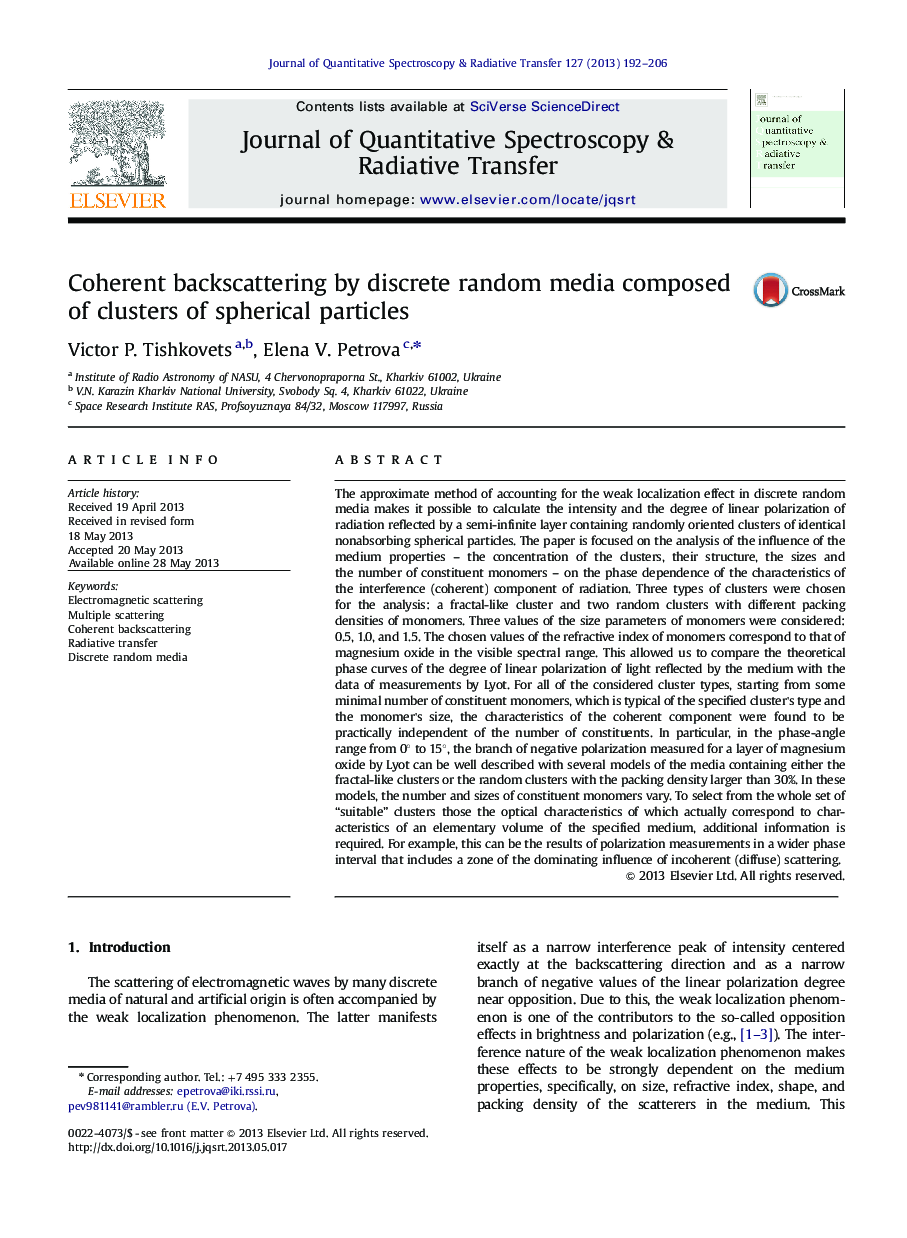| Article ID | Journal | Published Year | Pages | File Type |
|---|---|---|---|---|
| 5428784 | Journal of Quantitative Spectroscopy and Radiative Transfer | 2013 | 15 Pages |
â¢Light scattering by a random medium of nonabsorbing clusters is considered.â¢The coherent component is accounted for in the radiative transfer procedure.â¢The influence of the clusters properties on the opposition effects is analyzed.â¢Several models agree with the polarization phase profile measured for a MgO sample.
The approximate method of accounting for the weak localization effect in discrete random media makes it possible to calculate the intensity and the degree of linear polarization of radiation reflected by a semi-infinite layer containing randomly oriented clusters of identical nonabsorbing spherical particles. The paper is focused on the analysis of the influence of the medium properties - the concentration of the clusters, their structure, the sizes and the number of constituent monomers - on the phase dependence of the characteristics of the interference (coherent) component of radiation. Three types of clusters were chosen for the analysis: a fractal-like cluster and two random clusters with different packing densities of monomers. Three values of the size parameters of monomers were considered: 0.5, 1.0, and 1.5. The chosen values of the refractive index of monomers correspond to that of magnesium oxide in the visible spectral range. This allowed us to compare the theoretical phase curves of the degree of linear polarization of light reflected by the medium with the data of measurements by Lyot. For all of the considered cluster types, starting from some minimal number of constituent monomers, which is typical of the specified cluster's type and the monomer's size, the characteristics of the coherent component were found to be practically independent of the number of constituents. In particular, in the phase-angle range from 0° to 15°, the branch of negative polarization measured for a layer of magnesium oxide by Lyot can be well described with several models of the media containing either the fractal-like clusters or the random clusters with the packing density larger than 30%. In these models, the number and sizes of constituent monomers vary. To select from the whole set of “suitable” clusters those the optical characteristics of which actually correspond to characteristics of an elementary volume of the specified medium, additional information is required. For example, this can be the results of polarization measurements in a wider phase interval that includes a zone of the dominating influence of incoherent (diffuse) scattering.
